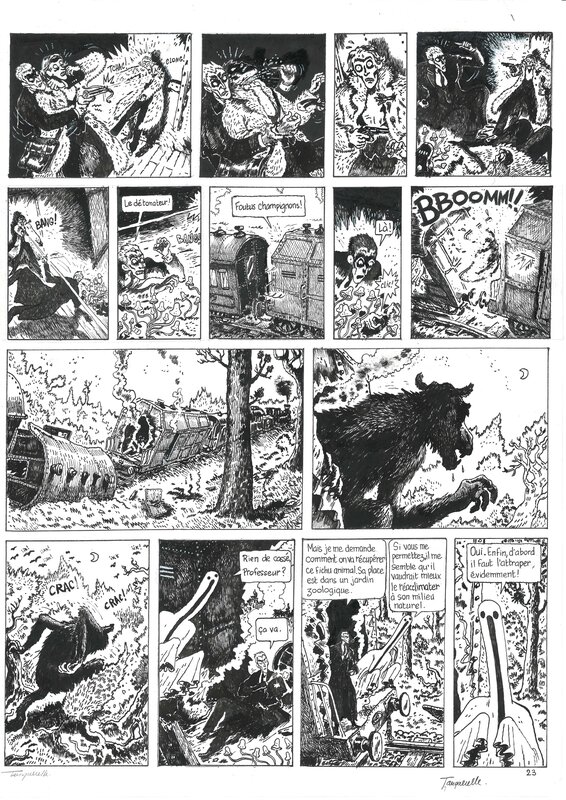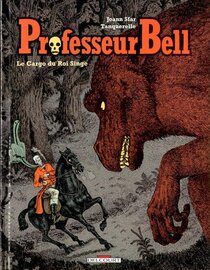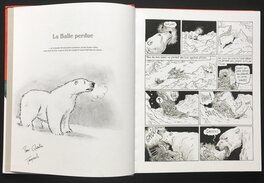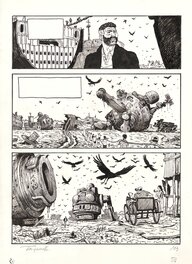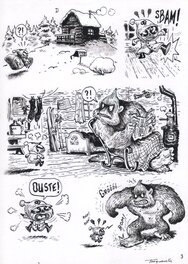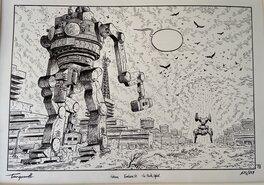In Opikanoba 's collection
Description
Planche 23 de l'album "Le cargo du Roi Singe"
Encre de chine
38.7 cm x 28.5 cm
Signé 2 fois.
Encre de chine
38.7 cm x 28.5 cm
Signé 2 fois.
Inscriptions
Signé 2 fois
Comment
Une serie édité chez Delcours en 2002, mais qui possède tous les ingrédients de l’univers de Poisson pilote de la même période (age d'or a mon sens).
J'y retrouve la patte de Blain, celle de David.B et bien-sur le dessin de Sfar, spirituellement présent.
Car, il s'agit dans ce tome 3, du passage de main entre Sfar et Tanquerelle qui gardera pour cet opus la même ligne graphique que pour les tomes précédents réalisé par Sfar.
J'y retrouve la patte de Blain, celle de David.B et bien-sur le dessin de Sfar, spirituellement présent.
Car, il s'agit dans ce tome 3, du passage de main entre Sfar et Tanquerelle qui gardera pour cet opus la même ligne graphique que pour les tomes précédents réalisé par Sfar.
3 comments
To leave a comment on that piece, please log in
About Hervé Tanquerelle
Hervé Tanquerelle was born in Nantes and educated at the School Émile Cohl in Lyon. There, he learned the finer points of the comics profession from Yves Got, whose work has had a big influence on Tanquerelle's style. His first claim to fame was 'La Ballade du Petit Pendu', that was published by L'Association in 1998. During his collaboration on L'Association's Comix 2000 anthology, he met Hubert Boulard.
Boulard asked him to illustrate his script of 'Le Legs de l'Alchimiste', and five books of the series were published by Delcourt between 2002 and 2007. During the same period, he worked with Joann Sfar on the series 'Professeur Bell'. For Milan's children's magazine Capsule Cosmique, he developed his own comic, 'Tête Noire', between 2006 and 2008.
Throughout his career, he has participated in several anthology projects and worked with Jerry Frisen on the anthology series 'Lucha Libre' and its spin-off 'Les Luchadoritos' for Les Humanoïdes Associés. By 2008, Tanquerelle also turned to more realistic comics. For Futuropolis, he made a diptych based on interviews with his stepfather Yann Benoît about his life in a community in the late 1960s.
Text (c) Lambiek

